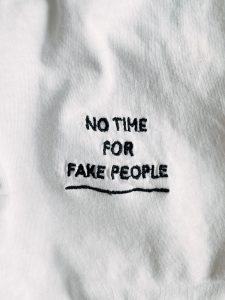What is the FABRIC Act, and how will it change the fashion industry? If not, you may keep on reading this.
The fashion industry plays a significant role in the development of the global economy by bringing in billions of dollars each year. However, the business has come under risk due to its impact on the environment, how it treats its employees and its lack of transparency.
American policymakers introduced the FABRIC Act to address these concerns. What, however, is the FABRIC Act and how will it impact the fashion industry? Let’s have a look.
Contents
What is the FABRIC Act?
The FABRIC Act, the Fashion and Apparel Blockchain and Enhanced Regulatory Information Act were passed in 2017. Senators Todd Young and Kirsten Gillibrand presented it to Congress in March 2021. Transparency, traceability, and sustainability are just a few of the significant problems the fashion industry faces that the act addresses.
The FABRIC Act’s primary goal is creating a blockchain-based system allowing consumers, retailers, and regulators to track a garment’s entire lifecycle, from raw materials to production to distribution and removal. The system would also explain how the garment affected society and the environment, including its carbon footprint, water use, and labor practices.
How will the FABRIC Act change the fashion industry?
As a result of the FABRIC Act, the fashion industry may experience several changes. Some of the primary ways that the act might impact the industry include the following:
Additional traceability and transparency
It will improve the transparency and traceability of the fashion industry, which is one of the FABRIC Act’s main advantages. The origin, production method, and social and environmental impacts of the clothing customers buy can all be seen.
Customers will be helped in making better-informed decisions about the clothing they buy, and businesses will be encouraged to improve their labor and sustainable practices.
Heightened sustainability
Regarding greenhouse gas emissions, water pollution, and air pollution, the fashion industry ranks among the most polluting sectors of the global economy.
The FABRIC Act can deal with some of these issues by disseminating information on how clothing affects the environment. Employers could use this information to identify areas where they could use more eco-friendly materials, produce less waste, or utilize energy more effectively.
Enhanced conditions for work
In addition, the FABRIC Act might improve labor practices in the fashion sector. By disclosing details about garment workers’ working conditions, such as their wages, hours, and safety standards, the act may encourage businesses to improve their labor practices and ensure that employees are treated fairly.
Encouraging innovation
The FABRIC Act may encourage innovative thinking in the fashion industry. Creating a blockchain-based system for tracking clothing may accelerate the creation of new technologies and business models that put sustainability and transparency first.
Potential problems
There might be problems that need to be resolved even though the FABRIC Act might have a positive effect on the fashion industry. For instance, the act might necessitate significant expenditures on infrastructure and modern technology, which might be prohibitive for smaller businesses. Data privacy and security may also need to be improved due to the sharing of sensitive data that the blockchain system mandates.
The FABRIC Act may alter the fashion industry by enhancing traceability, transparency, and sustainability. By creating a blockchain-based system for tracking clothing, companies might be persuaded to enhance their labor and environmental policies, and customers might be provided with more information to help them decide what to buy.
Potential challenges must be overcome to guarantee the success of the act. The FABRIC Act is a significant step towards creating a fashion industry that is more accountable and sustainable.
😇 Also read:
07 Affordable ways to build a sustainable wardrobe
What are the Sustainable Linen Clothing Brands? Here’s what you need to know in 2023
Can I wear Black Tights with a White Dress? – A perfect guide made just for you in 2023





